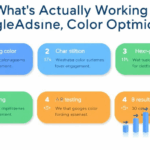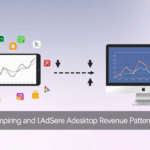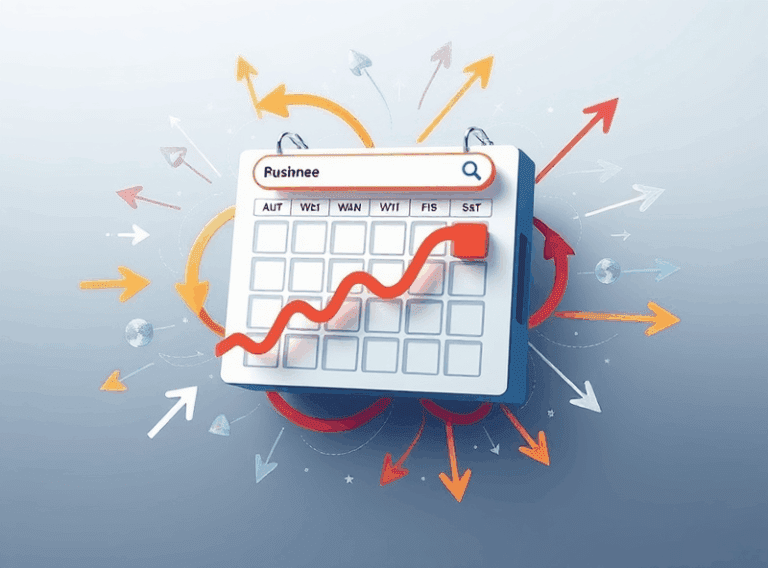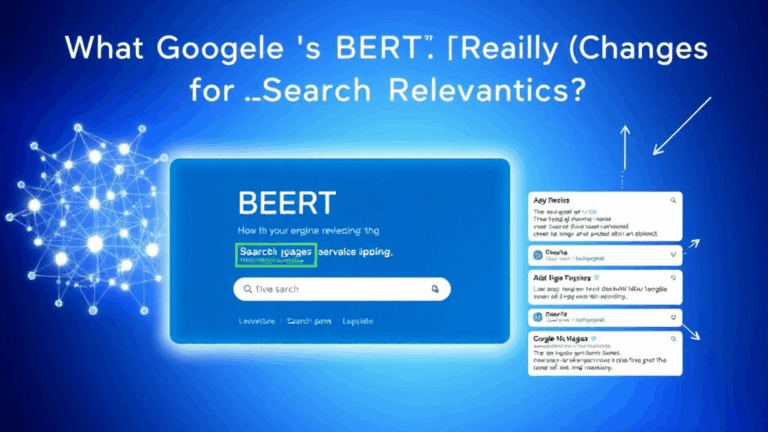Fixing Weird Google AdSense CPC Drops on Responsive Layouts
AdSense CTRs Nosediving on Mobile? It Might Be Your CSS
So I accidentally stumbled into this during a redesign sprint. Our CTR looked solid on desktop but on mobile it mysteriously dropped… like, below cold brew drip level. Swapped in some debug tools, and what I saw absolutely did not make sense. Turns out: the unit wasn’t actually visible above the fold in mobile view — but NOT in the way you think. The viewport padding set by the CSS framework (Tailwind, in my case) was pushing the ad block juuuust below the visible screen. Chrome DevTools didn’t even catch it until I throttle-emulated slow 3G and watched layout shifts in real time.
The issue? Mobile viewport meta tag was fine, but some spacing divs rendered differently with dynamic font scaling. That was enough to kill first-paint engagement with the ad unit. Traffic was there, impressions were logged, but not actual confirmed views.
Use window.innerHeight + getBoundingClientRect() onload to measure your ad’s placement during real initial render, not after full hydration. That showed it was sitting around 520px from the top — on a 530px-tall viewport. It didn’t even load in the first render chunk (AdSense considers this stuck “below the fold”).
Shifted one margin class, CTR came halfway back the next day.
Lazy-Loading Ad Units Are Lying to You in Lighthouse Scans
Here’s the thing nobody mentions: Google’s own PageSpeed and Lighthouse audits don’t accurately simulate AdSense lazy-load behavior. You’re seeing those beautiful green performance scores because the ad call isn’t made until the user scrolls (or technically, until intersection threshold is hit). But ad revenue? That’s quietly tanking because CPC gets whacked when the first ad impression is delayed or never fired.
I went full detection mode and wrote a MutationObserver on iframe classes with “adsbygoogle” in them. Sure enough — on slower devices/browsers, the mutation event happened after my impression timestamp was expected. That lag? It gets interpreted like low-quality inventory time, and my CPC dropped about 30-something percent across mobile pages doing this.
“First visible ad matters more than how fast your page loads. Just don’t let the first one hide in the bushes.”
Try forcing one highly visible, non-lazy ad unit just after nav. Ads below that can stay lazy. CPC stabilized within 48 hours of this change.
Auto Ads Are Not Fluid with Grid Layouts
If you’re using CSS Grid and letting Auto Ads do its thing — yeah, don’t. Whatever fuzzy placement logic the AdSense crawler is using was clearly written before grid template areas existed. I had an article layout using display: grid with named areas like so:
grid-template-areas:
"title title"
"content sidebar"
"footer footer";
Auto Ad placement refused to ever put an ad inside the “content” region, even with a wide open paragraph spacing. Where did it drop them? In “footer” and sometimes one random box near title. Dug around network waterfall and saw crawler snapshot JSONs referencing literal DOM position indexes, clearly tied to older flow-based layout assumptions.
I hard-coded a manual <ins class="adsbygoogle"> block inside the content grid and poof — my CPC popped back up because it finally got context right between paragraph blocks. Don’t trust AI ad placement when your layout isn’t 2009-compatible.
Responsive Height Units Are Sabotaging Intrusive Ad Detection
This one took three weeks to figure out because it looked fine in dev, fine in emulators, fine in snorkeled previews — but was still getting flagged for “accidental ad overlap” by the policy bot. The cause? We were setting max-width with percentage and height with vh. It looked normal. But on devices that were hiding their browser chrome (Safari pinned mode, Android full screen), that vh unit shrank… pulling the ad under interactive UI unintentionally.
So when users scrolled fast or toggled elements, sometimes our fixed creative dipped right under the nav bar, but clicked areas still registered. Two policy warnings later, I just rewrote the styles to use either flexbox-spaced wrappers or JS-measured pixel constants. Looks clunky, but no more warnings.
Remember: Google’s ad policy crawler isn’t fully viewport-aware, and it doesn’t use your CSS media queries. All it knows is rendered ad proximity to clickable elements — not your intent.
Text-Wrapped Ad Units Confuse Mobile Layout Engines
You’d think wrapping a floated ad unit with some justified article text would be peak editorial design. And it is — until you realize that on iPhone SE-sized screens, that wrap breaks and shoots the ad into weird z-index islanding. I had one where half the ad literally floated outside the paragraph container because of mix-ins and line box inconsistencies.
This messes with both content readability and the ad’s effective clickability, so AdSense logs it, but doesn’t value it. CPC? Falls apart because of interaction blindness.
Checklist: Avoiding Layout-Caused Ad Penalties
Learned these the hard way for responsive AdSense pages:
- Never float ad units with inline content on screens below 480px
- Use
clear: bothor full-width containers on mobile breakpoints - Add
min-heightto parent wrappers to avoid late-content collapse - Always test with actual throttled devices, not just Chrome sims
- On tablet breakpoints, center ads instead of pushing left/right via margin
- Never rely on aspect ratio locks — they break on rotated layouts
When Mobile Caching Conflicts with Ad Dedupe Systems
AdSense claims internal deduping handles repeat views just fine — and they’re not entirely lying. However, I set up Cloudflare with aggressive mobile caching + HTML edge caching to speed up initial paint on AMP fallback pages. That sounded innocent… until one update triggered our ad fetcher script to get double injected, once from our cached bundle and once from the live async JS call. Only on mobile.
The result? AdSense flagged the setup as “unexpected repeated renders” on identical placement IDs, and started suppressing certain units. I had to disable partial HTML caching for mobile-only views and rewrite the Adsbygoogle instances with unique data-ad-region values just to reset its internal consistency check.
Here’s what I saw in console logs:
adsbygoogle.push() error: ad slot already rendered
adsbygoogle.push() warning: same block ID detected multiple times
Honestly, that’s the only real clue it gives you. Watch your cached HTML closely — and in tools like Cloudflare or Fastly always test mobile edge differently from desktop to catch those overlaps.
AdSense CPC Tanking After Core Web Vitals? Blame Cumulative Layout Shift
This felt like a gotcha. After a major redesign chasing Core Web Vitals, our CLS dropped below 0.02 — perfect. CPC, however, dropped along with it. Looked like less ad engagement, but why?
Turns out we over-optimized: using height: auto for inline ad containers during initial render, letting them collapse briefly before the ad iframe resolved. Google’s page stability tests love that, but the CPC algo interpreted it as unreliable placement (since visual position shifted slightly when ads loaded in). So we met the CLS goal but tanked our primary revenue unit.
I fixed it by setting a min-height roughly equal to the average ad frame (~280px) with a low-opacity placeholder. CLS stayed low, but CPC recovered by around 18ish percent after a week.
The Core Web Vitals purists might not like it, but between Google’s monetization engine and their site quality validator, the left hand isn’t always shaking the right.














